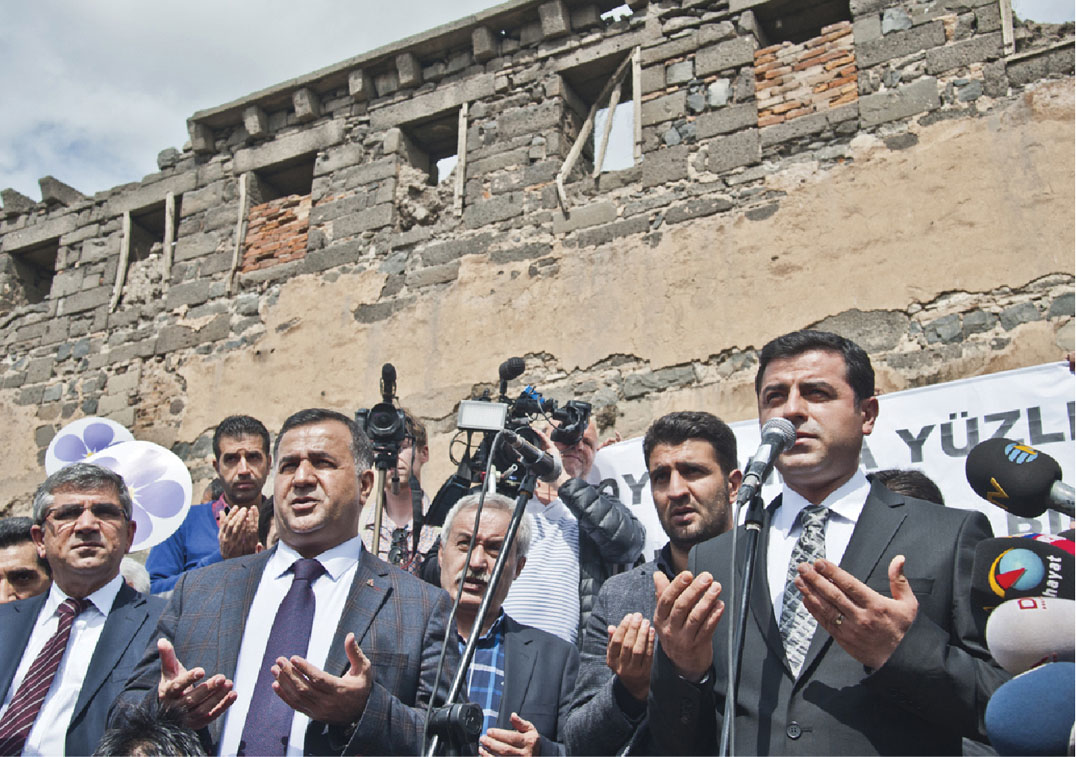
Ara Sarafian
Special to Hye Sharzhoom
On 12 September 2013, a “Monument to Common Conscience” was erected in Diyarbakir. An unassuming structure made of wood, breezeblocks, marble, and plastic, it contained a simple message in six languages (one of which was Armenian): “Let us share each other’s pains so that they are not repeated again.”
The ambiguous simplicity of the monument and its message belied its potency. Although the monument was presented on the anniversary of the September 1980 military coup in Turkey, there were murmurs regarding its wider meaning and purpose. The ostensible idea behind the structure was to draw attention to Turkey’s long record of state-sponsored violence, such as the 1937–38 destruction of Dersim, the torture of thousands of political prisoners in Turkish jails during the 1980s, and the oppression of Kurds in the Turkish Republic.
Yet, from the moment of its appearance, the monument was associated with the Armenian Genocide of 1915. At the unveiling ceremony, Abdullah Demirbaş, the mayor of the Sur municipality responsible for the monument, stated that, before discussing the violence suffered by the Kurds in Turkey, the Kurds themselves should recognize the violence that their ancestors meted on Armenians [and Assyrians] in 1915. His words were taken as an act of contrition in many circles, and some stated that the monument actually constituted a public recognition of the Armenian Genocide by the Kurdish community of Turkey.

April 24, 2015, Diyarbakir.
The erection of such a monument in Diyarbakir was not surprising. The city had already been at the forefront of addressing the legacy of 1915 in Turkey by working to openly acknowledge its history, and to nurture its historic Armenian community. These aims were advanced through public education regarding the city’s multi-cultural heritage and Armenians, rebuilding Sourp Giragos Church (today the largest Armenian church in the Middle East), and supporting conferences, concerts, and exhibitions related to Armenians.
On April 24th, 2014, the “Monument to Common Conscience” assumed a more overt character when it was used by Diyarbakir’s municipal government as the main venue for the commemoration of the Armenian Genocide. The significance of this event was highlighted by the presence of Kurdish intellectuals and politicians. The main speaker, Tahir Elçi, a human rights activist and head of the Diyarbakir Bar Association, was categorical in his frank discussion of the Armenian Genocide and condemnation of modern-day Turkey for its refusal to come to terms with its dark past.
Many Armenians rejoiced at the spectacle of such developments, especially on territories where the Armenian Genocide had actually been executed by the Ittihadist regime. While official Ankara continued to deny the genocide, Kurdish intellectuals in Turkey’s mountainous southeast were coming to terms with the issue.
One year later, on the occasion of the 100th anniversary of the Armenian Genocide on 24 April 2015, Diyarbakir was again a major focal point in the struggle for the public recognition of this historical crime. The main Kurdish political party in Turkey, the HDP (Peoples’ Democratic Party), chose Diyarbakir to highlight the wrongs suffered by the Armenians. The Kurdish elected officials who participated in this event represented millions of people. Diyarbakir – the unofficial “capital” of Turkish Kurdistan – had clearly become the showcase for the recognition of the Armenian Genocide in Turkey.
Sadly, the euphoria did not last. Within a few months, Turkey descended into civil unrest. The murder of Tahir Elçi in Diyarbakir was a watershed moment that led to serious clashes between Kurdish militants and Turkish security forces. The latter responded with heavy artillery and flattened a huge part of historic Diyarbakir. The entire Kurdish southeast of Turkey was placed under direct rule by Ankara, with the declaration of a state of emergency. The region became a “black hole” of human rights abuses as the Turkish state dismissed elected officials and brutalized civilians. Kurdish politicians and activists were forced to go underground, or to flee their homeland entirely.
Despite these latest setbacks, the hopes and aspirations expressed by the “Monument to Common Conscience,” and the Kurdish-Armenian reconciliation process that accompanied it, have not faded. Kurdish civil society organizations, professional bodies, and political parties have remained open to constructive dialogue. They have recognized the Armenian Genocide and sought Kurdish-Armenian reconciliation without preconditions. The core question now remains: what would be the best way to address the legacy of the genocide and reintegrate Armenians into the social fabric of their ancestral lands in Turkey? This question can only be answered with the participation of more Armenians in the historic processes at play.
- Ara Sarafian is a historian and the Executive Director of the Gomidas Institute in London. He has been active in peace and reconciliation projects in Diyarbakir since 2012.
 Hye Sharzhoom Armenian Action
Hye Sharzhoom Armenian Action